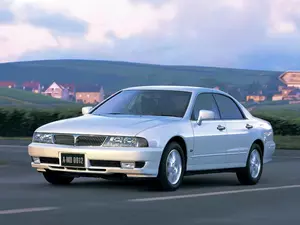
| Vehicle | Precise engine size | Difference from world average | Engine size to consumption ratio | Horsepower from 1 L | Engine size to 100 kg of weight |
|---|---|---|---|---|---|
| 3.0 i V6 24V GDI 4WD |
2.97 L (2972 cc) |
26.7% bigger | - | 81 hp from 1 L | 175 cc to 100 kg |
| 3.5 i V6 24V |
3.5 L (3497 cc) |
49.1% bigger | - | 59 hp from 1 L | 219 cc to 100 kg |
| 2.5 i V6 24V GDI |
2.5 L (2497 cc) |
6.4% bigger | - | 80 hp from 1 L | 166 cc to 100 kg |
| 3.0 i V6 24V GDI |
2.97 L (2972 cc) |
26.7% bigger | - | 81 hp from 1 L | 186 cc to 100 kg |
| Vehicle | 3.0 i V6 24V GDI 4WD |
|---|---|
| Precise engine size | 2.97 L (2972 cc) |
| Difference from world average | 26.7 bigger |
| Engine size to consumption ratio | - |
| Horsepower from 1 L | 81 hp from 1 L |
| Engine size to 100 kg of weight | 175 cc to 100 kg |
| Vehicle | 3.5 i V6 24V |
| Precise engine size | 3.5 L (3497 cc) |
| Difference from world average | 49.1 bigger |
| Engine size to consumption ratio | - |
| Horsepower from 1 L | 59 hp from 1 L |
| Engine size to 100 kg of weight | 219 cc to 100 kg |
| Vehicle | 2.5 i V6 24V GDI |
| Precise engine size | 2.5 L (2497 cc) |
| Difference from world average | 6.4 bigger |
| Engine size to consumption ratio | - |
| Horsepower from 1 L | 80 hp from 1 L |
| Engine size to 100 kg of weight | 166 cc to 100 kg |
| Vehicle | 3.0 i V6 24V GDI |
| Precise engine size | 2.97 L (2972 cc) |
| Difference from world average | 26.7 bigger |
| Engine size to consumption ratio | - |
| Horsepower from 1 L | 81 hp from 1 L |
| Engine size to 100 kg of weight | 186 cc to 100 kg |

| Vehicle | Precise engine size | Difference from world average | Engine size to consumption ratio | Horsepower from 1 L | Engine size to 100 kg of weight |
|---|---|---|---|---|---|
| 2.0 i V6 24V |
2 L (1998 cc) |
14.8% smaller | 62 cc to 1 mpg | 73 hp from 1 L | 143 cc to 100 kg |
| 2.5 i V6 24V 4WD |
2.5 L (2497 cc) |
6.4% bigger | 96 cc to 1 mpg | 70 hp from 1 L | 147 cc to 100 kg |
| 3.0 i V6 24V 4WD |
2.97 L (2972 cc) |
26.7% bigger | 119 cc to 1 mpg | 71 hp from 1 L | 175 cc to 100 kg |
| 3.0 i V6 24V |
2.97 L (2972 cc) |
26.7% bigger | 110 cc to 1 mpg | 71 hp from 1 L | 186 cc to 100 kg |
| Vehicle | 2.0 i V6 24V |
|---|---|
| Precise engine size | 2 L (1998 cc) |
| Difference from world average | 14.8 smaller |
| Engine size to consumption ratio | 62 cc to 1 mpg |
| Horsepower from 1 L | 73 hp from 1 L |
| Engine size to 100 kg of weight | 143 cc to 100 kg |
| Vehicle | 2.5 i V6 24V 4WD |
| Precise engine size | 2.5 L (2497 cc) |
| Difference from world average | 6.4 bigger |
| Engine size to consumption ratio | 96 cc to 1 mpg |
| Horsepower from 1 L | 70 hp from 1 L |
| Engine size to 100 kg of weight | 147 cc to 100 kg |
| Vehicle | 3.0 i V6 24V 4WD |
| Precise engine size | 2.97 L (2972 cc) |
| Difference from world average | 26.7 bigger |
| Engine size to consumption ratio | 119 cc to 1 mpg |
| Horsepower from 1 L | 71 hp from 1 L |
| Engine size to 100 kg of weight | 175 cc to 100 kg |
| Vehicle | 3.0 i V6 24V |
| Precise engine size | 2.97 L (2972 cc) |
| Difference from world average | 26.7 bigger |
| Engine size to consumption ratio | 110 cc to 1 mpg |
| Horsepower from 1 L | 71 hp from 1 L |
| Engine size to 100 kg of weight | 186 cc to 100 kg |